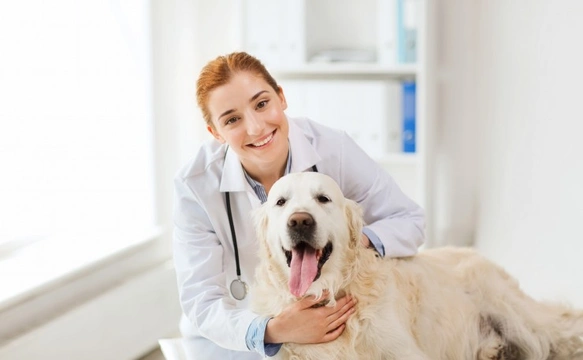
What happens during a dog echocardiogram?
Learning that your vet suspects that your dog might have a heart problem can be very worrying for dog owners, and there are a huge and varied range of different problems that can affect the canine heart, ranging from very mild to acute and severe.
Before your vet can tell you more about your dog’s heart problem – or even tell you for sure that they have one – they may need to undertake a range of different tests and procedures to pinpoint the exact issue and determine its severity. One such test is called an echocardiogram, and this is performed with an ultrasound machine – the same machine your vet will use if your dog is pregnant to check out the pups as they develop.
If your vet has told you that your dog needs to have an echocardiogram, you might be wondering what is involved in this, how invasive it is, how it is performed, and what it can tell you.
In this article we will explain what an echocardiogram is and how they can help your vet to find out what’s going on with your dog’s heart. Read on to learn more.
What is an echocardiogram used for?
An echocardiogram uses an ultrasound wave to scan the dog’s heart, and the waves bounce back from the heart tissue to form a picture on the machine’s viewing screen to allow you vet to see what’s going on within your dog’s heart.
This can help to identify damage, disease and malformations of the heart that may affect your dog’s health, help to pinpoint the root cause, and indicate the degree of damage or severity. An echocardiogram can spot thickening of the heart itself, as well as certain symptoms of degenerative heart diseases and other defects.
If your dog already has a known heart condition, your vet might also wish to carry out an echocardiogram before they are scheduled for any anesthetised surgical procedure, to ensure that their heart is strong enough to withstand the anaesthetic and to identify the best type of sedation to use.
What equipment is involved?
Many dog owners draw a blank when they hear the term “echocardiogram,” but the device used to perform it is one that most of us are at least passingly familiar with – an ultrasound machine, which has a wide range of different applications.
We often associate ultrasounds with being used to scan litters within the womb, and this is one of their most common applications – but ultrasounds are very versatile tools, and can be used to help to diagnose issues and problems in a wide number of other bodily areas of soft tissue, including the heart.
Different types of echocardiography
Echocardiograms are performed with ultrasound machines, but different types of echocardiograms require different types of machinery, as there are three different variants that can be worked with, each with different uses and applications. Your vet will let you know which type of echocardiogram is required for your dog, and explain what they are looking for or expect to find.
What happens to your dog during an echocardiogram?
One of the main advantages of an echocardiogram examination is the fact that it is totally non-invasive, and may negate the need for an exploratory surgery or more complex diagnostic procedure. Ultrasounds are totally safe – there’s no radiation involved, unlike x-ray exams – and your dog may not even need to be sedated for their echocardiogram, unless they are very stressed, wriggly, or unable to keep sufficiently still.
Your vet might well need to shave the fur over and around your dog’s chest to allow proper contact of the ultrasound wand, although this is not always the case. However, your vet will let you know first if this is required, and will try not to remove any more fur than is absolutely necessary.
Can any local vet perform an echocardiogram?
These days, many if not most reasonably sized local veterinary practices have their own ultrasound machine, and so may be able to perform the procedure in-house. However, this is not always the case, for a variety of reasons.
First of all, not all clinics have their own ultrasound – which means they will need to refer your dog to a clinic that has one. Also, there are different types of echocardiograms and each one requires a different type of machine, so unless your local clinic specialises in canine heart issues, you may have to travel to a clinic with the right type of machine.
Also, canine cardiology – the study and treatment of heart problems in dogs – is a specialist field, and your vet may need to refer you to a clinic with a specialist clinician, even if they have the right equipment in-house to perform the exam itself.
Alternatively, your clinic might be able to perform the physical ultrasound but then consult with a remote specialist about the findings, before reaching a diagnosis.
Your vet will be able to fill in all of the details you will need to know in advance, as well as of course confirming the respective costs involved.



